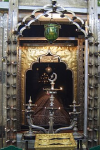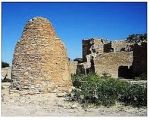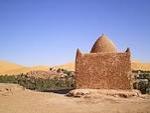zuzu
from a land where the 'Y' in "your girl' is silant
Wadani
🦨Primus
⚜️Secundus
🪵 Tertius
🏛Quartus
🤺♢Squire
𝚂𝚌𝚑𝚘𝚕𝚊𝚛 ♖
LV
4
- Joined
- Jan 14, 2019
- Messages
- 3,947
- Reaction score
- 4,866
- Awards
- 5
-these shrines are found in all Muslim communities throughout the world and are called by many names. The term dargah is common in the Persian-influenced Islamic world, notably in Iran and turkey
-the shrine is a personal/private shrines where Muslims sit for hours and even days doing dhikr and reciting the quran. This is where you will find "holy man" or shaikh al-kabbir(the great shaikh)
- shrine is built on the site associated with a Muslim saint or religious figure, usually his or her tomb. It is a funeral construction, usually small, cubic-shaped, and topped with a dome
-it is a place where imams prayed and meditated (their spiritual residence).
-Many Muslims believe their wishes are fulfilled after they offer prayer or service at a shrine of the saint they follow
-Over time, musical offerings of dervishes and sheiks in the presence of the devout at these shrines, gave rise to Islamic devotional singing like Qawwali and Kafiand also sufi poetry
-ziyara is a form of pilgrimage to sites associated with Muhammad, his family members and descendants (including the Shī‘ī Imāms), his companions and other venerated figures in Islam such as the prophets, Sufi auliya, and Islamic scholars. Sites of pilgrimage include mosques, maqams, battlefields, mountains, and caves.
-More than any other tomb in the Islamic world, the shrine of the Prophet Muhammad is considered a source of blessings for the visitor. A hadith of the Prophet states that, "He who visits my grave will be entitled to my intercession" and in a different version "I will intervene for those who have visited me or my tomb."
-Ibn Taymiyyah condemned all forms of seeking intercession from the dead
-This view of Ibn Taymiyya was rejected by mainstream Sunni scholars both during his life and after his death. The Shafi'i hadith master Ibn Hajar al-Asqalani stated that "This is one of the ugliest positions that has been reported of Ibn Taymiyya".
-The current wahhabi ruler of Saudi Arabia have destroyed more than 1400-year-old grave sites of the prophets companions and ahl al-bayt including Othman, Khadija and Aisha amongst numerous others
Shia view
-It is haram (forbidden) to prostrate to anyone except Allah. If the act of prostration in front of the shrines of the Infallible Imams ('a.s.) is a form of thanksgiving to God, there is no objection, otherwise, it is haram.
-The Shī‘ah do however perform Ziyarah, believing that the entombed figures bear great status in the eyes of God, and seek to have their prayers answered through these people (a form of Tawassul)
iraq

pakistan

somalia-dervishes



Maghreb

sudan-

-the shrine is a personal/private shrines where Muslims sit for hours and even days doing dhikr and reciting the quran. This is where you will find "holy man" or shaikh al-kabbir(the great shaikh)
- shrine is built on the site associated with a Muslim saint or religious figure, usually his or her tomb. It is a funeral construction, usually small, cubic-shaped, and topped with a dome
-it is a place where imams prayed and meditated (their spiritual residence).
-Many Muslims believe their wishes are fulfilled after they offer prayer or service at a shrine of the saint they follow
-Over time, musical offerings of dervishes and sheiks in the presence of the devout at these shrines, gave rise to Islamic devotional singing like Qawwali and Kafiand also sufi poetry
-ziyara is a form of pilgrimage to sites associated with Muhammad, his family members and descendants (including the Shī‘ī Imāms), his companions and other venerated figures in Islam such as the prophets, Sufi auliya, and Islamic scholars. Sites of pilgrimage include mosques, maqams, battlefields, mountains, and caves.
-More than any other tomb in the Islamic world, the shrine of the Prophet Muhammad is considered a source of blessings for the visitor. A hadith of the Prophet states that, "He who visits my grave will be entitled to my intercession" and in a different version "I will intervene for those who have visited me or my tomb."
-Ibn Taymiyyah condemned all forms of seeking intercession from the dead
-This view of Ibn Taymiyya was rejected by mainstream Sunni scholars both during his life and after his death. The Shafi'i hadith master Ibn Hajar al-Asqalani stated that "This is one of the ugliest positions that has been reported of Ibn Taymiyya".
-The current wahhabi ruler of Saudi Arabia have destroyed more than 1400-year-old grave sites of the prophets companions and ahl al-bayt including Othman, Khadija and Aisha amongst numerous others
Shia view
-It is haram (forbidden) to prostrate to anyone except Allah. If the act of prostration in front of the shrines of the Infallible Imams ('a.s.) is a form of thanksgiving to God, there is no objection, otherwise, it is haram.
-The Shī‘ah do however perform Ziyarah, believing that the entombed figures bear great status in the eyes of God, and seek to have their prayers answered through these people (a form of Tawassul)
iraq

pakistan

somalia-dervishes



Maghreb

sudan-

